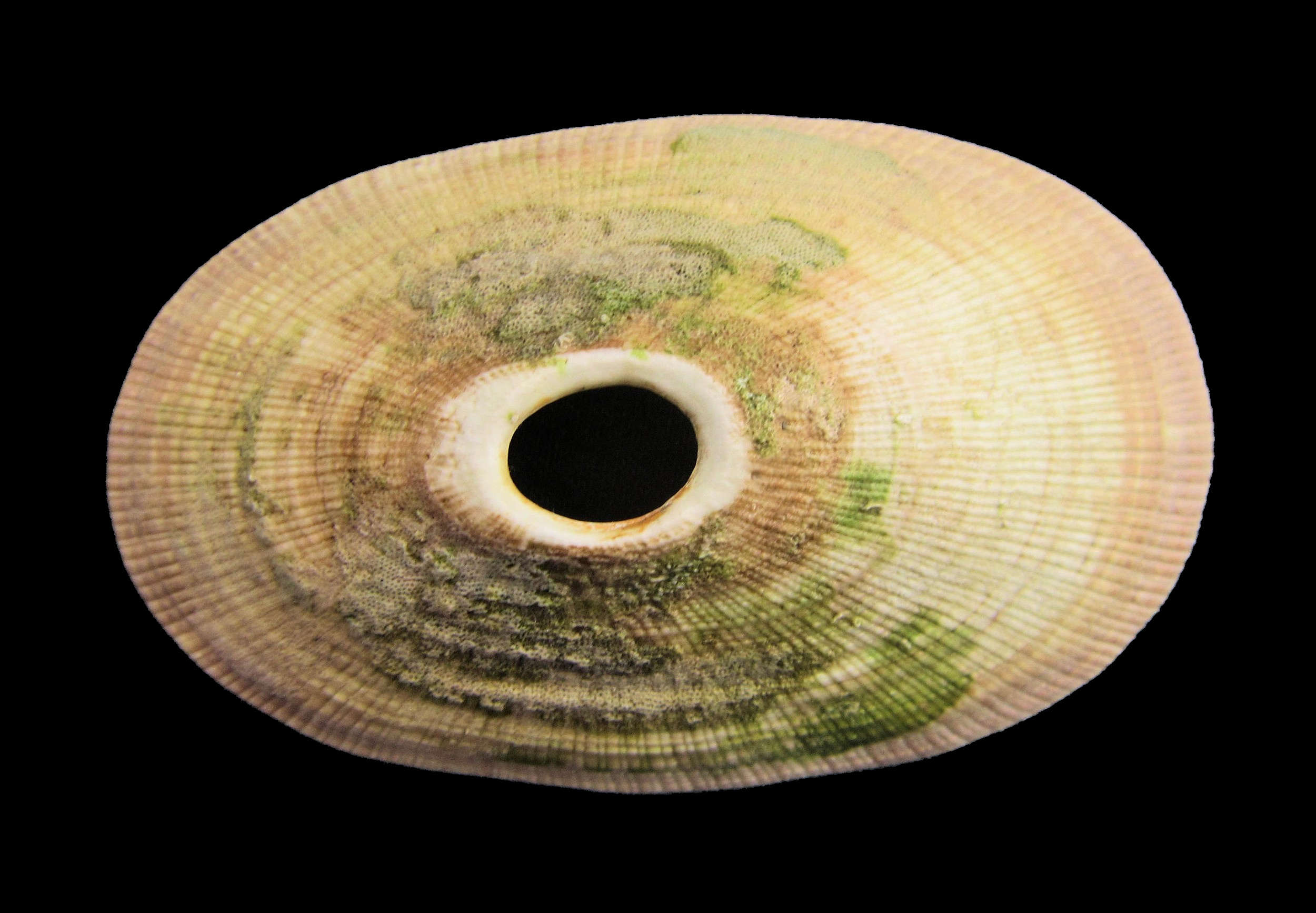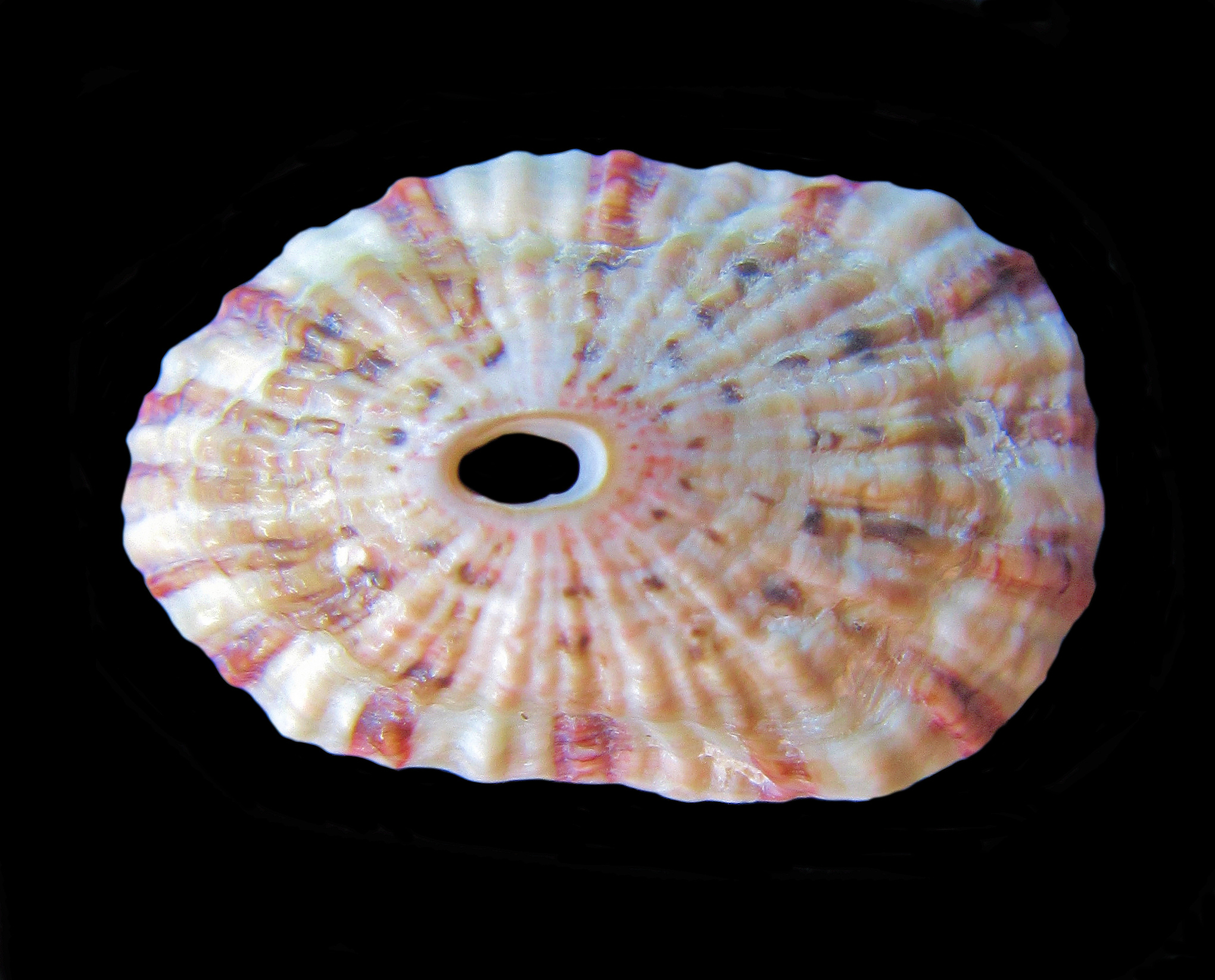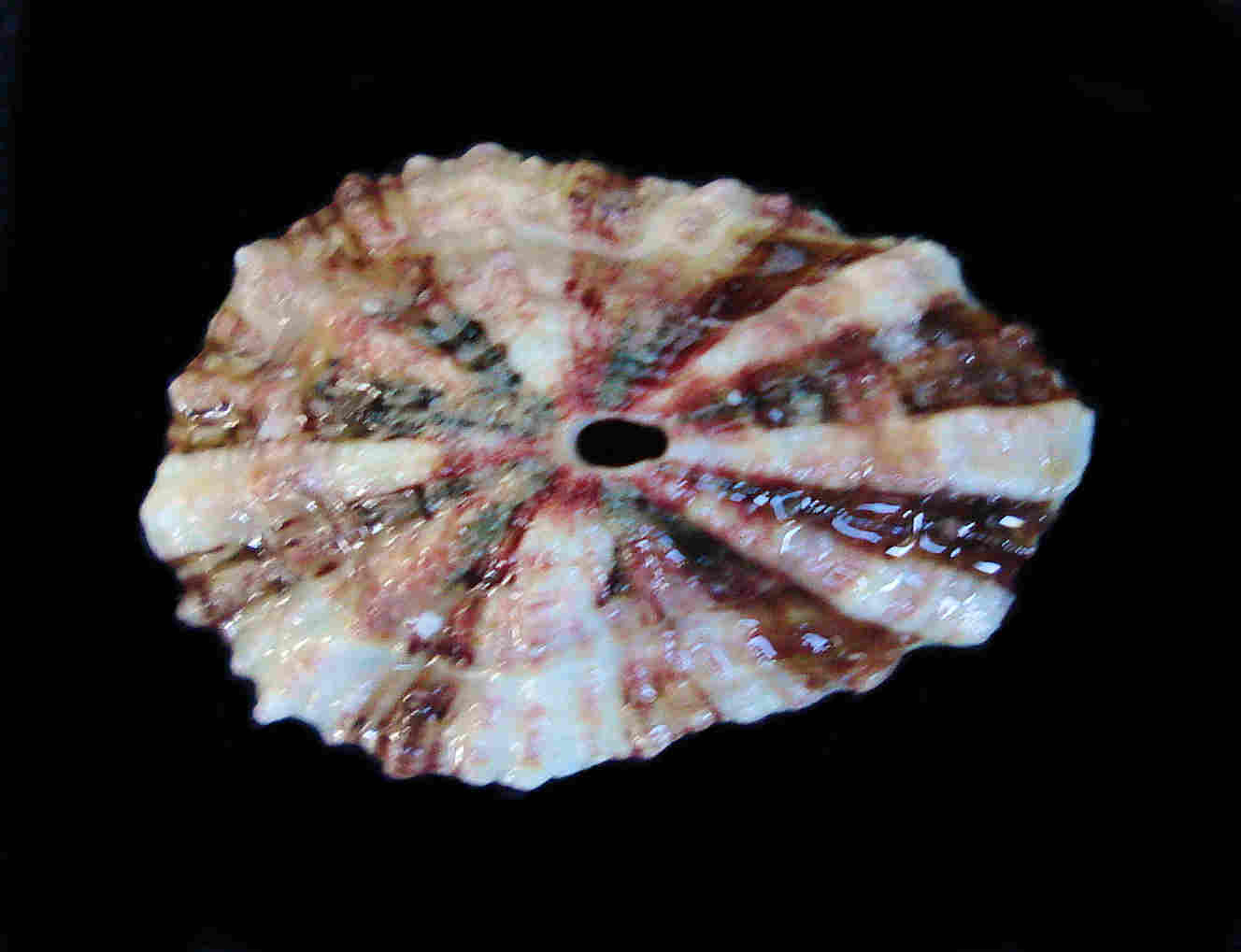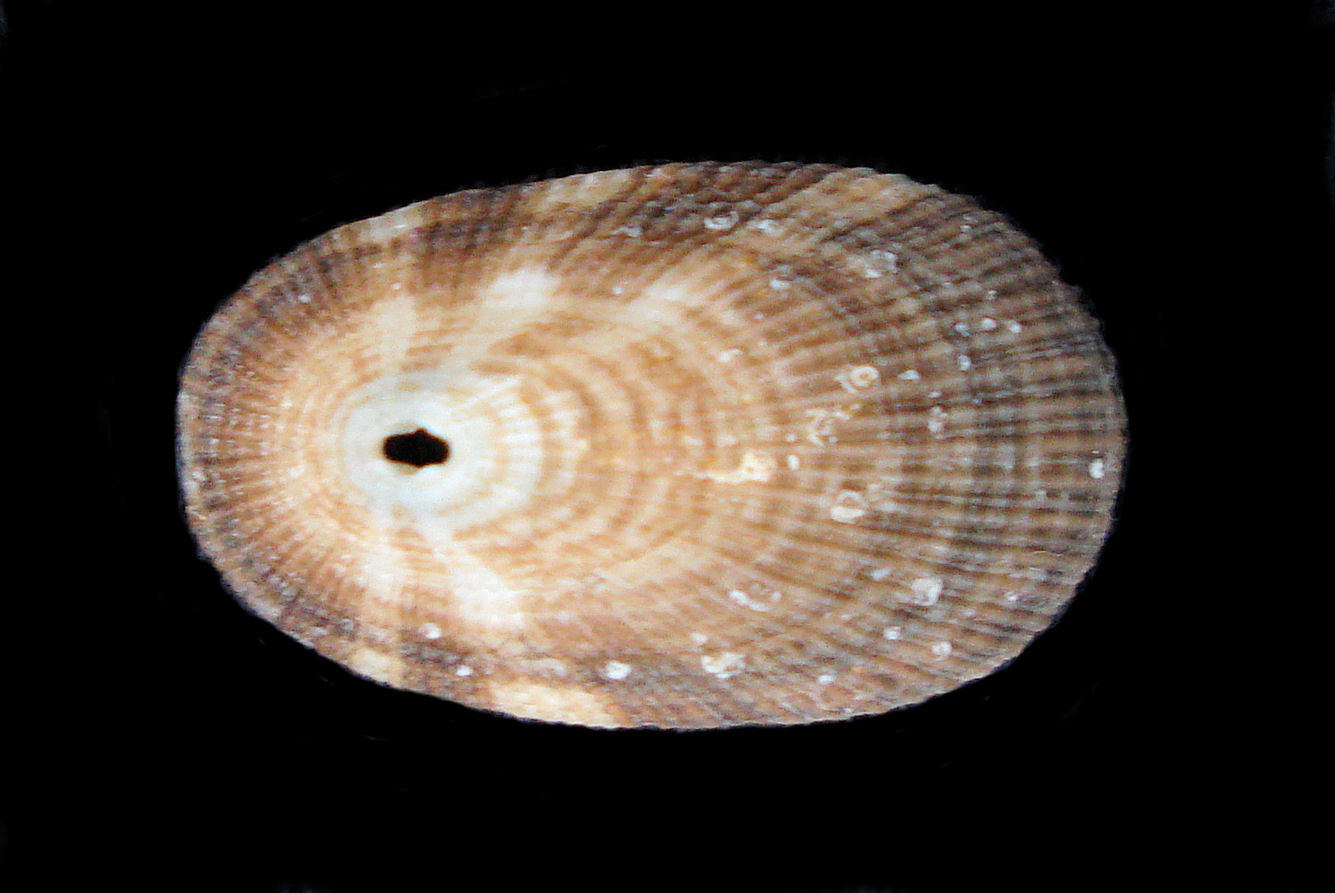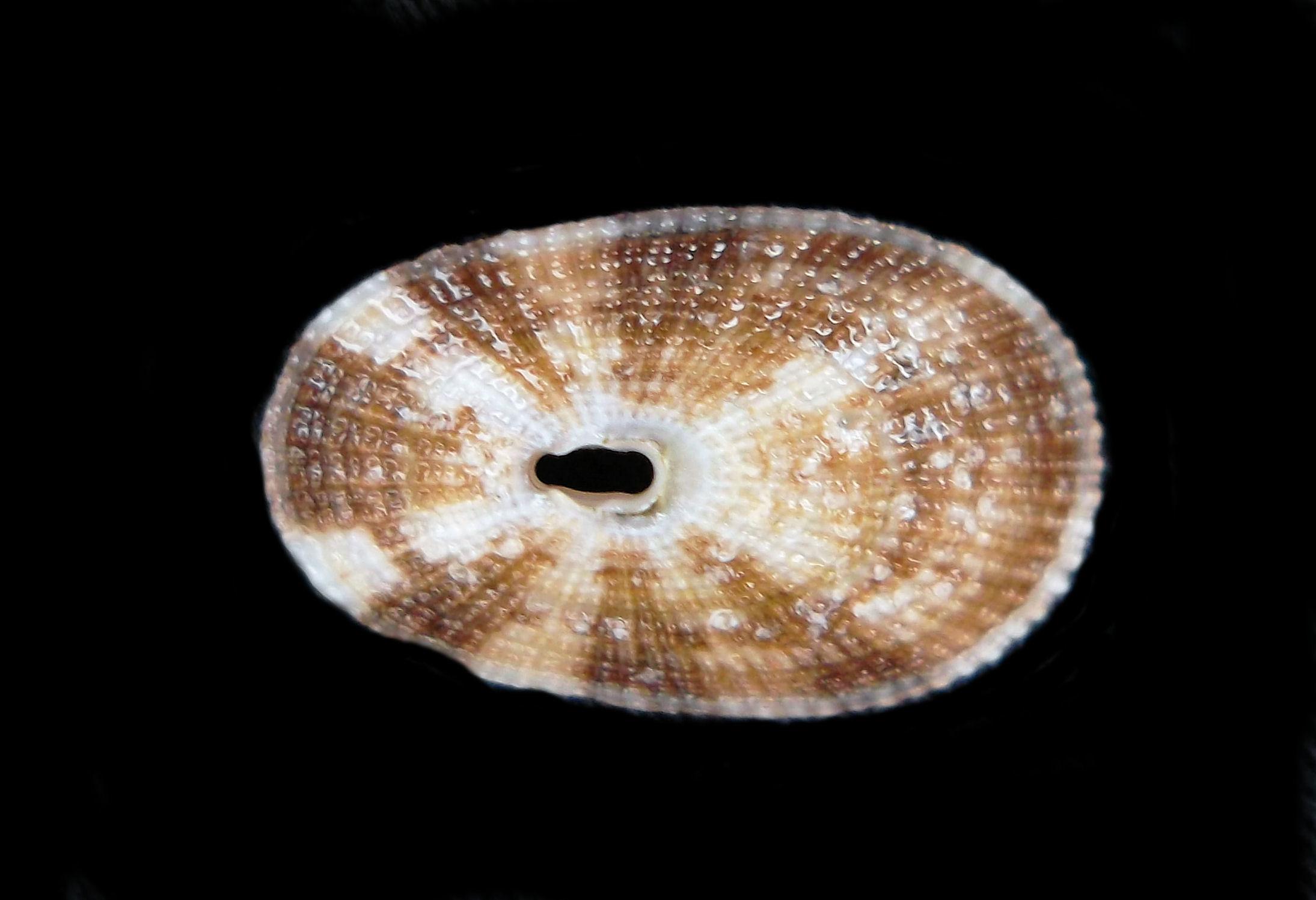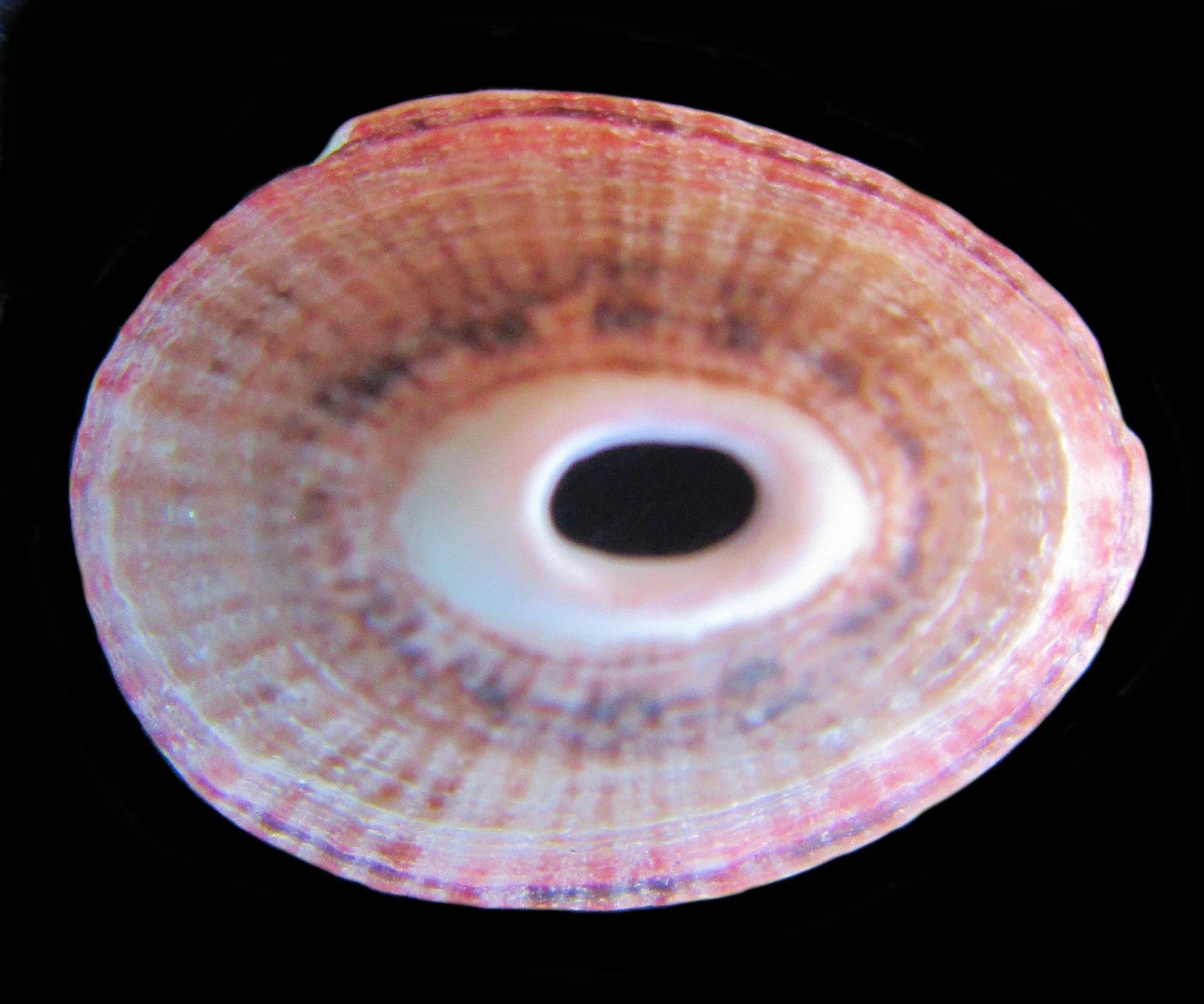Keyhole Limpets of the Fissurellidae Family that are also known as Slit Limpets and Volcano Limpets are conical in shape with an oval base. Each shell has either an oval hole located at the apex, a slit-like hole located just anterior of the apex, or a slit at the anterior end of the shells margin. The hole or slit provides respiration and waste elimination. Keyhole Limpets have no operculum. Shell sculpture consists primarily of radial ribbing. They have a mantle that may cover some, or most, of the shell. They have a strong foot that allows them to cling tightly to rocks and other hard surfaces. This foot, combined with their streamline profile, allows them to live in areas of heavy surf and surge. Keyhole Limpets eat a variety of foods including, algae, detritus, and sponges, In turn, they are preyed upon by shore birds, fish, sea stars, and seals. Their utilize camouflage and a hard shell to avoid predation. One Keyhole Limpet species has a symbiotic relation with a Polychaete Worm with the worm receives protection under the Keyhole Limpet Shell, in return the worm bites the tube feet of attacking sea stars.
Keyhole Limpets are found in temperate and tropical seas. They live attached to rocks, from the intertidal zone to deep water. There are over five hundred species in the Fissurellidae Family of which fifteen are found in the coastal waters of Baja.
